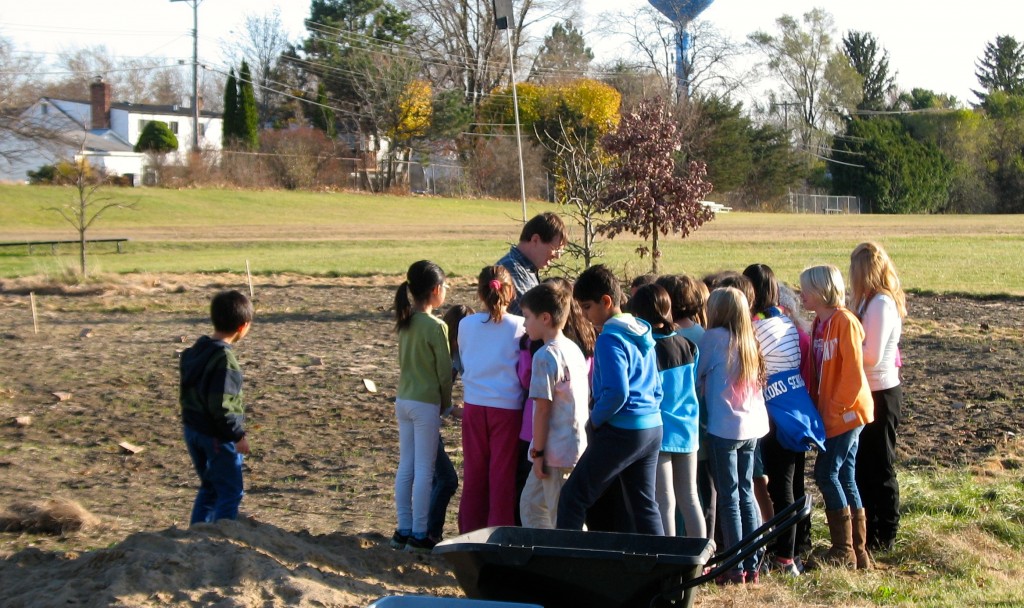By Jo Mathis
AAPS District News
You wouldn’t know it by looking there now, but Thurston Elementary School students have helped plant a new native short-grass prairie in the northeast corner of the Thurston playground.
“Every year we engage Thurston students to create or improve areas within the schoolyard and Thurston Nature Center,” said Jim Vallem, land steward at the nature center. “They enjoy this because it’s the same environments where they study plants, animals and the interrelationships between them. In talking with the students, they are clearly enthusiastic to learn about the natural world around them.”

The Thurston Nature Center covers about 20 acres of gently rolling terrain adjacent to Thurston Elementary, and includes five ecosystems along with a seven-acre pond within its boundaries.
The nature center is an outdoor laboratory and nature preserve, available for field trips and allowing the integration of classroom science curriculums with experiential education outdoors. It has been fully maintained, preserved, and enhanced through neighborhood volunteers, Thurston and Clague School teachers, students and their families for more than 45 years.
Though some assume the land is owned by the city of Ann Arbor, it is mostly owned by AAPS, with the remainder by the Orchard Hills Athletic Club.
The area was planted with oak trees in 2009 to begin an oak savanna, but the turf grass was left untouched until this year. Because of the size of the area, it is being converted in two phases, in 2015 and 2016.
To create the prairie, the existing grass was smothered, followed by planting with native shrubs, grasses and flowers, said Vallem,, who also thanks Thurston Nature Center volunteers and Boy Scout Troop 1 for their help..
In late November, Thurston students sowed the flowers. They also learned about oak savannas, why they won’t see many flowers next year (the plants concentrate on putting down deep roots first), and why native plants are essential to insects (especially butterfly and moth caterpillars) and the rest of the food chain.
Several of the species planted are listed as threatened or endangered in Michigan.
The Wildflower Association of Michigan provided the financial support needed to make this project a reality.

Be the first to comment